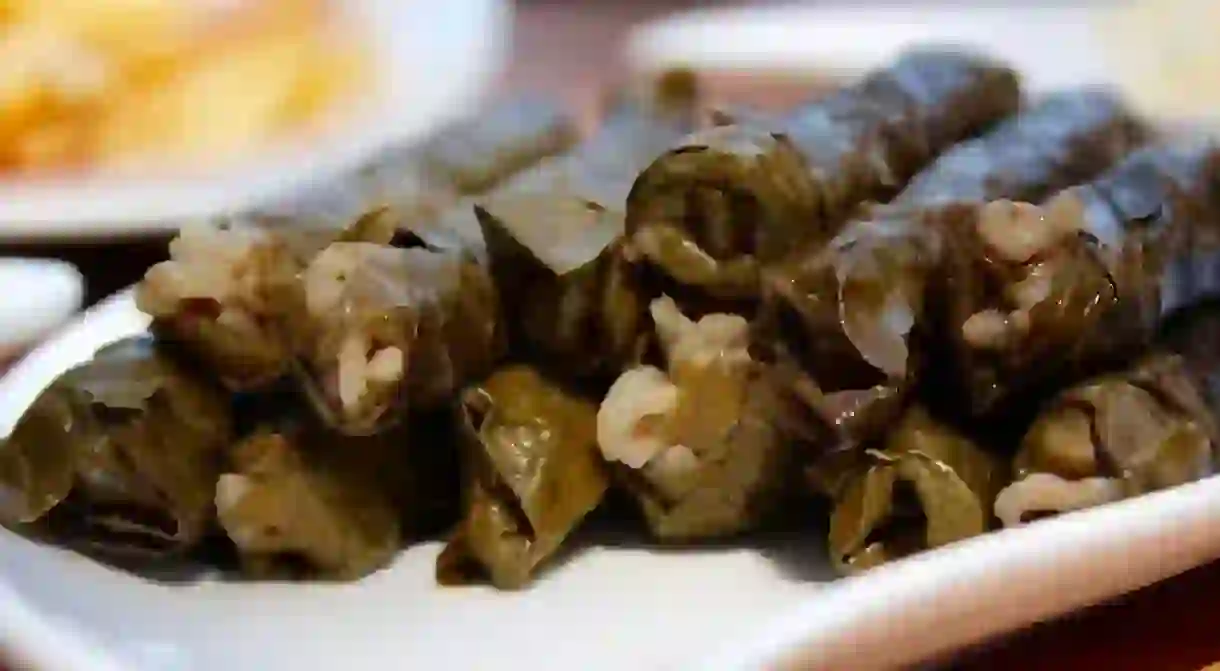11 Traditional Serbian Dishes You Need to Try

The Serbs were once described as a people ‘unusually well-supplied with milk, cheese, butter, meat, honey and wax’, and needless to say they have been putting those ingredients to good use for centuries now. Serbia is a true paradise for gluttons, especially those with a carnivorous tooth. With influences from all across the region, these are the traditional dishes you need to try when in town.
Sarma
Before we get into the bevy of grilled meats, it is important to make it abundantly clear that Serbian cuisine isn’t all about such things. It doesn’t get much more Slavic than Sarma, so be sure to try this dish when in Serbia. What is it? Well, it can be a variety of things, but in Serbia you’ll mostly find it as sour cabbage leaves filled with minced meat. Sarma holds a dear place in the heart of every Serb and everyone’s mother undoubtedly makes the ‘best sarma in the world’.
Karadjordjeva šnicla
We’ve all heard of the schnitzel, but what about the Serbian version? Sometimes the best things happen by accident, and this breaded meat extravaganza is one such example. A Yugoslav chef was tasked with cooking chicken kiev in the 1950s, but a lack of poultry forced him to use veal instead. The chef wasn’t happy and in a panic he covered the concoction in tartare sauce. Thus, a national favourite was born.
Prebranac
Baked beans get a bit of a rough reputation all of the world, almost always coming up in conversation whenever a student is trying to convey how difficult their academic years were. ‘Oh, I had to eat baked beans everyday’ they crow, blind to the fact that baked beans can be absolutely fantastic. The Serbs are the king of the beans, and Prebranac is a bean soup with added meaty goodness. This is the edible version of true comfort.

Ćevapi
Okay, fine, we’ll talk about the grilled meats. Ćevapi is ubiquitous in the Balkans, Serbia included. How to describe it? Just eat it. There are many different versions but almost all in Serbia are some version of mixed meat ‘sausage’-style fingers of wonder, served with lepinja (bread), kajmak (cream cheese in a way, but kajmak is kajmak), and onions. If you’ve travelled to the Balkans and never eaten ćevapi, then you quite simply haven’t travelled to the Balkans.

Pljeksavica
Sticking with the majesty of grilled meats, pljeskavica also goes by the name ‘Serbian hamburger’. Like anything getting compared to the ideological West, this is like the original only much bigger and much better. If you’re feeling particularly gluttonous you can get it stuffed with cheese, although the word ‘heavy’ immediately springs to mind in that case. Pljeskavica is a national treasure and then some.

Šopska salad
After all that heavy stuff, it might be a good idea to tuck into something a little healthier. Luckily for everyone involved, the Serbs do a fine hand when it comes to salads, with the classic šopska salata at the top of the list. The salad actually originated in Bulgaria but has become a staple of most nations in the Balkans. Tomatoes, cucumbers, onions, peppers and white cheese combine for a majestic salad experience, if such a thing is allowed to exist.

Riblja čorba
If one of the most successful rock bands in the country shares its name, the forecast looks good for this popular soup. Riblja čorba (Fisherman’s soup) is exactly what you would expect a broth with such a name to be. A spicy soup pot punctuated with delicious river fish. It is a favourite in Vojvodina, and could well be the hottest dish on offer in the country.
Đuveč
You’ll encounter plenty of stews on your foodie tour of Serbia, and Đuveč might just be the best of the bunch. Meat and vegetables combine in a dish that isn’t a million miles away from what one expects from a ratatouille, but this is more than just a regional imitation. This is another meal brought to the Serbs during the Ottoman occupation, showing that five centuries of foreign rule isn’t all terrible. Mostly bad, but not entirely.

Absolutely anything cooked ‘pod sač’
A little bit of cheating with this entry, but the subtitle above is 100% true. If you find yourself in a Serbian restaurant and you are struggling to decide what to eat, frantically search the menu for ‘pod sač’ (or под сач, in cyrillic). The sač is a large ceramic lid of sorts, which cooks meat through the convection baking technique. The end result is magnificent – meat that simply drips off the bone without any struggle. If you’re looking for tender meat, you have found more than you bargained for.

Mućkalica
Have you hosted a barbecue and are unsure what to do with all that delicious leftover grilled meat? Mućkalica is the only option! Well, it isn’t the only option, but you get our point. Mućkalica is a meat-and-vegetable stew, albeit one without an easily defined centre. Think of it like a barbecue and you’ll be in the right ballpark somewhat. Definitions are often irrelevant, as all that matters is how delicious mućkalica can be.
Svadbarski kupus
We’ll finish with a celebratory dish in the shape of the marvellously monikered svadbarski kupus, or ‘wedding cabbage’. This meal obviously comes out at major events such as weddings and births, but it has found its way onto the menus at traditional restaurants of Belgrade and the rest nonetheless. The dish consists of cabbage and meat, nothing else, but hours are given to the two ingredients in order for them to slowly come together in the most wonderful way.
There you have it. Eleven traditional dishes to try next time you’re in Serbia. As we say here in Belgrade, prijatno!













